Kerala
Bekal Fort : the biggest and most well-maintained historical place in Kerala, displays heritage on an enormous scale. Dating back to 300 years, the fort is believed to have been built by Sivappa Naik of the Ikkeri dynasty in 1650 AD.
This colossal fort offers panoramic views of the Arabian Sea from its tall observation towers. Built in the 17th century, the historic fort is shaped like a giant keyhole. Some of the major attractions of the tower are the tunnel opening towards the south, the main Tank with its flight of steps and the Observatory Tower. Apart from witnessing a large number of international tourists, it is also a favorite shooting locale for film makers.

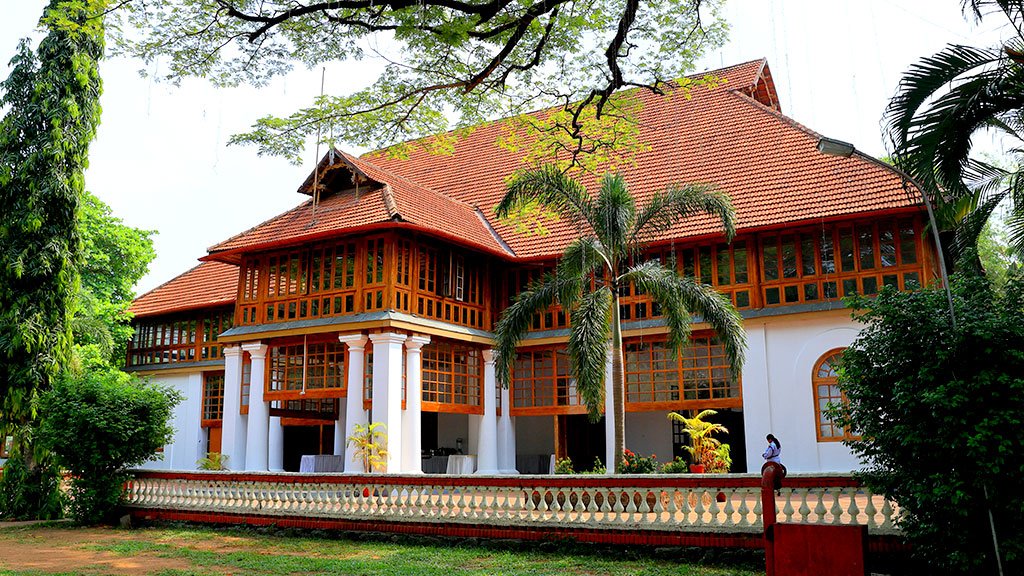
Bolgatty Palace, now converted into a heritage hotel, was built by the Dutch in India. Brought into existence by the Dutch traders in 1744, this palace is the oldest of its kind outside Holland. Initially, the building served as the Governor’s palace for the commander of Dutch Malabar, before being leased to the British in 1909.
Post-independence, the entire property underwent a change in its functional identity. The palace now functions as one of the top heritage hotels in Kerala. Tourists staying at the hotel can avail its various facilities like the swimming pool, 9-hole golf course and Ayurveda center. Besides, guests are also treated to daily Kathakali performances.
Gundert Bungalow was the abode of Dr. Herman Gundert, the German scholar, lexicographer and missionary. He is best remembered for his monumental contributions to the Malayalam language. His determined efforts culminated in the publication of the first Malayalam dictionary in 1859, along with the first Malayalam newspapers, Rajyasamacharam and Paschimodayam.
The 200 year old bungalow is famous for its mansion style architecture that stirs up feelings of nostalgia. The mansion like features can be witnessed in its spacious verandahs, big doors etc. However, more than the architecture, it’s the history associated with it that draws visitors to it in large numbers.


The Jewish Synagogue or the “Paradesi Synagogue,” as it’s called, attracts a steady stream of visitors due to its historical value set against a perfectly friendly ambiance. The synagogue, built by the Jewish community of Cochin, is the oldest in the Commonwealth.
The large hall inside the synagogue contains several rare antique objects. The floor, paved with hand-painted blue-willow patterned floor tiles, embellishes the overall beauty of the place. The other attractive features are the pulpit with brass rails, the teak Ark – which houses four scrolls of the Torah, and two golden crowns presented to the Jewish Community by the Kings of Kochi and Travancore.
Krishnapuram Palace is located at Kayamkulam in Alappuzha district is one of the major tourist attractions in Kerala. Distinguished by its gabled roofs and dormer windows, it once housed Marthanda Varma, the Maharaja of Travancore, in the 18th century.
The archaeological museum inside the palace showcases various captivating exhibits, one of which is the Gajendra Moksham (salvation of the elephant king), extending to 49 sq..m. The theme of the mural, being mythological, depicts an elephant saluting Lord Vishnu with the other saints and goddesses being witnesses to this holy act. The other attraction here is the landscaped garden and the Buddha mandapam (porch-like structure).


Mattancherry Dutch Palace was built by the Portuguese in 1557 and presented to Raja Veera Kerala Varma of Kochi, as a gift. However, it was the Dutch who undertook renovations for the palace in 1663.
Incredible mural paintings and antique royal regalia, including furniture and weapons, are the prime fascinations here. The mural paintings adorning the Royal Bed Chamber that depict the story of Ramayana will enchant you no end. Similarly, the paintings on the ground floor depict the story of Kumarasambhavam by the great writer Kalidasa. Some of the other attractions are the life-size statues of Kochi kings, Dutch maps of old Kochi, etc.
Poonjar Palace : To witness the cultural magnificence of Kerala in all its glory, visit the Poonjar Palace. Visitors are introduced to a sense of royalty that existed in the bygone days. An interesting fact about this palace is its being constructed from wood, thereby reflecting the traditional architecture of Kerala.
A museum located inside the palace is a prime fascination for visitors. It houses several royal collections of antiques, sculptures and rock-cut lamps. A visitor will be thoroughly enchanted by some of the other exhibits like a droni (treatment bed) for Ayurveda massages, huge chandeliers, sculptures of Nataraja (the dancing Shiva), jewel boxes, etc.


St. Francis Church is one of the major historical places in Kerala, besides being the oldest in India. The church was built by Portuguese Franciscan Friars, who reached Kochi along with Pedro Alvarez Cabral – the discoverer of Brazil. The church wears an old-world charm which is clearly visible in its wooden pulpit, baptism platform, confessional, offering or the book rests.
As a visitor, you must visit the burial spot of Vasco da Gama, besides the Old Dutch baptism and marriage register – the Doop Book. Go through the various inscription on leaves depicting the life and time of the Portuguese and Dutch people, it’s a unique historical experience.
Sree Padmanabhaswamy Temple Among the various things to do in Kerala, one should be visiting the Sree Padmanabhaswamy Temple, dedicated to Lord Vishnu. Dating back to the 8th century, it’s one of the 108 sacred Vishnu Temples or Diya Desams in India.
Visitors here will be enchanted by the fabulous sight of its presiding deity – Lord Vishnu, reclining on Anantha, the hooded serpent. It consists of 12008 salagramams (fossilized shells). The temple architecture consists of various paintings and murals, including those of Narasimha Swamy, Lord Ganapati and Gaja Lakshmi. The halls of the temples and the ceiling, which display the navagrahas (the nine planets), provide an unforgettable experience.

Kerala features a wet maritime climate and experiences rains during the summer monsoon season (June to August)
The best time to visit is between November and March, when the weather is pleasantly warm, the rains have passed, and wildlife viewing is at its best.
However, Kerala does tend to be less swelteringly hot than most other parts of India, even in summer, so it is one of the best summer destinations in the country
Having said that, travel during the wet monsoon months is becoming increasingly popular for the adventurous, and the Kerala government is actively promoting monsoon tourism in Kerala.
Why is Kerala so famous for tourism?
Named as one of the ten paradises of the world by National Geographic Traveler, Kerala is famous especially for its ecotourism initiatives and beautiful backwaters. Its unique culture and traditions, coupled with its varied demography, have made Kerala one of the most popular tourist destinations in the world

ALLEPPEY
Referred to as the Venice of the East, Alappuzha has always enjoyed an important place in the maritime history of Kerala. Today, it is famous for its boat races, backwater holidays, beaches, marine products, and coir industry. Alappuzha Beach is a popular picnic spot. The pier, which extends out to the sea here, is over 137 years old. Entertainment facilities at the Vijaya Beach Park add to the attraction of the beach. There is also an old lighthouse nearby which greatly intrigues all visitors.
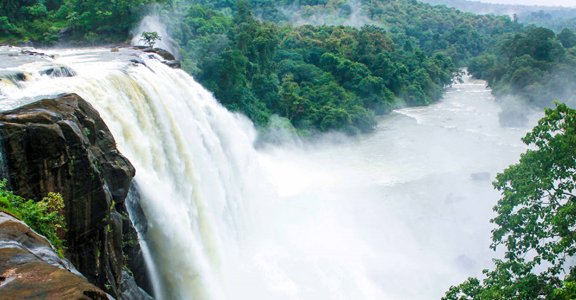
ATHIRAPPILLY
Athirappilly is popular among tourists. Athirappilly Falls is one of the best places to visit in Kerala. Another popular waterfall to visit is the Vazhachal Falls. Athirappilly Falls is a part of the Chalakudy river and it is approximately 80 feet in height. Athirappilly is easily reachable from Chalakudy by taking a vehicle for rent or by bus from the Chalakudy private bus terminal.

BEKAL
Bekal in Kerala’s far north, have some long, white-sand beaches begging for DIY exploration. Bekal Beach encompasses a grassy park and a long, beautiful stretch of sand that turns into a circus on weekends and holidays when local families descend here for rambunctious leisure time. Isolated Kappil Beach, 6km north of Bekal, is a beautiful, lonely stretch of fine sand and calm water, but beware of shifting sandbars.

COCHIN
The queen of Arabian Sea is located in South West Cost of India. Located between the Arabian Sea and the Western Ghats, Kochi has been one of the most sought-after destinations in India. Fort Kochi and Mattancherry palace remain wonderfully serene, steeped with sepia-tinted memories of past glory and heritage. With its spice markets, Jewish synagogue, European church, Chinese fishing nets, a Portuguese palace, and 17th-century Dutch homes, Kochi stands testimony to the irresistible pull felt by wanderers and traders for over 600 years.
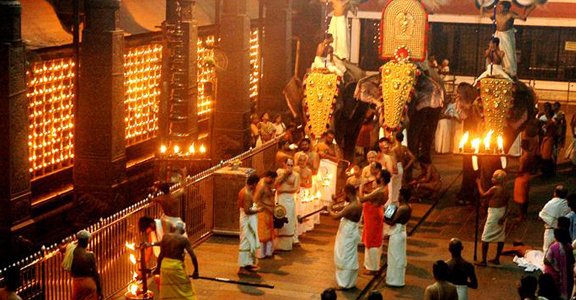
GURUVAYUR
Guruvayoor is home to the historic Sree Krishna Temple, called the Dwaraka of the South. It is among the most revered and popular pilgrimage destinations in Kerala and the entire country. The central shrine is believed to have been rebuilt in 1638 A.D. The architectural style and individual elements inside the shrine are beautiful representations of the history of the place.
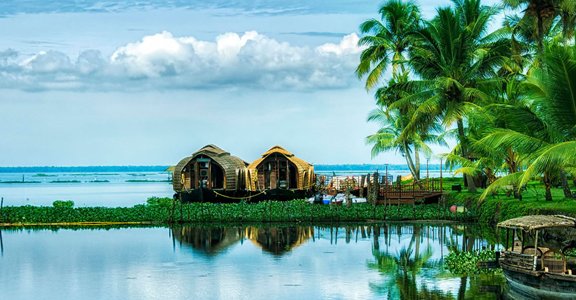
KUMARAKOM
Kumarakom is a village on Vembanad Lake in the backwaters of Kerala, southern India. It’s laced with canals, where houseboats ply the waters. Kumarakom Bird Sanctuary is home to many species including cuckoos and Siberian storks. Nearby, the Bay Island Driftwood Museum displays wooden sculptures. In the lake, Pathiramanal Island is a haven for rare migratory birds. Ancient Thazhathangady Mosque is east of Kumarakom.
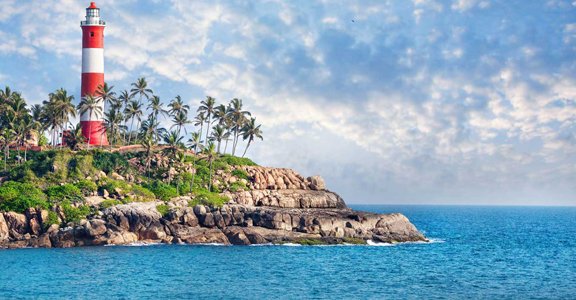
KOVALAM
Kovalam is an internationally renowned beach with three adjacent crescent beaches. It has been a favorite haunt of tourists since the 1930s. A massive rocky promontory on the beach has created a beautiful bay of calm waters ideal for sea bathing. The leisure options at this beach are plenty and diverse. Sunbathing, swimming, herbal body toning massages, special cultural programs, and catamaran cruising are some of them. Life on the beach begins late in the day and carries on well into the night. The beach complex includes a string of budget cottages, Ayurvedic health resorts, convention facilities, shopping zones, swimming pools, Yoga and Ayurvedic massage centers.

MUNNAR
Munnar rises as three mountain streams merge – Mudrapuzha, Nallathanni, and Kundala. 1,600 m above sea level, this hill station was once the summer resort of the erstwhile British Government in South India. Sprawling tea plantations, picturesque towns, winding lanes, and holiday facilities make this a popular resort town. Among the exotic flora found in the forests and grasslands here is the Neelakurinji. This flower which bathes the hills in blue once in every twelve years. Munnar also has the highest peak in South India, Anamudi, which towers over 2,695 m. Anamudi is an ideal spot for trekking.

KOLLAM
Kollam (Quilon) is the southern approach to Kerala’s backwaters and one end of the popular backwater ferry trip to Alleppey. One of the oldest ports in the Arabian Sea. The center of town is reasonably hectic, but surrounding it is the calm waterways of Ashtamudi Lake, fringed with coconut palms, cashew plantations and traditional villages – a great place to get a feel for the backwaters without the crowds.
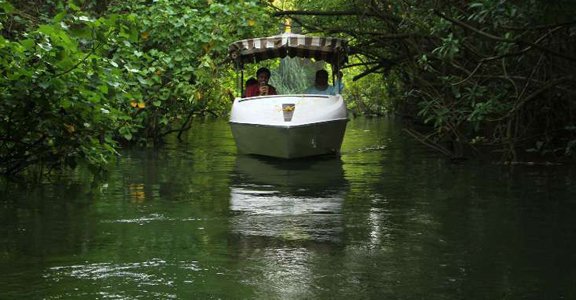
POOVAR
Poovar is a tourist town in the Trivandrum district of Kerala state, South India. This village is almost at the southern tip of Trivandrum while the next village, Pozhiyoor, marks the end of Kerala. This village beach attracts tourists. Major attraction is boating through the back waters.
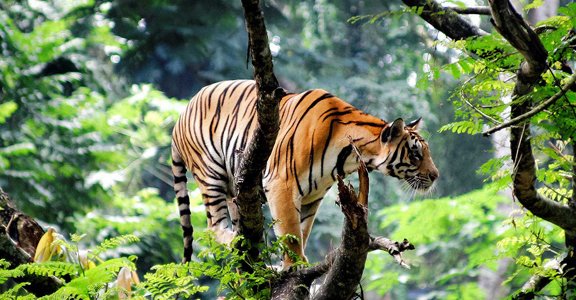
THEKKADY
The very sound of the word Thekkady conjures up images of elephants, unending chains of hills and spice scented plantations. The Periyar forests of Thekkady is one of the finest wildlife reserves in India. Spreads across the entire district are the picturesque plantations and hill towns that nestle beautiful trails for treks and mountain walks.

WAGAMON
Wagamon hill station in Idukki is among the few spots on the planet that need to be experienced firsthand to truly discover its glory. The grassy hills, velvet lawns and overall mysticism of the place cannot be replicated anywhere else in the world. This quaint town lies untouched by any modern influences and is neatly tucked away in Idukki district. Visitors can avail many activities including trekking, paragliding, mountaineering and rock climbing. People love travelling across a chain of three famous hills: Thangal, Murugan and Kurisumala. These are important to Hindus, Muslims and Christians, respectively, and are a perfect example of the communal harmony prevalent in the place.
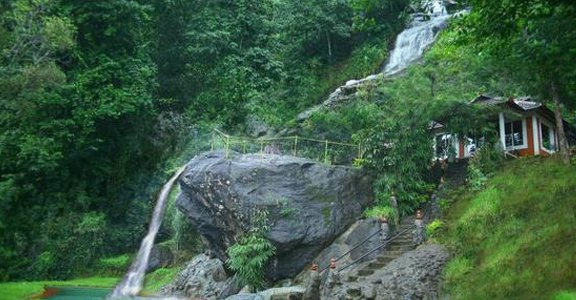
WAYANAD
Wayanad is the green paradise – the border world of the greener part of Kerala.Situated not far from Calicut or the city of Zamorins, Wayanad is a world apart from Keralas agricultural and industrial epicentres. It is a quiet place where scenic beauty, wild life and tradition matter, simplicity is a virtue and beauty still blossoms from the mountainous horizon and from the green glaze of alluring vegetation. Clean and pristine, enchanting and hypnotizing, this land has a history and mystery, culture and social epistemology yet to be discovered.

PONMUDI
Ponmudi is among the best ways to spend time in the city. Families and friends alike are known to go on long drives up the winding paths for a view they insist rivals any other in the State. The slopes shrouded in mist fill one with a feeling of wonder and amazement. A large amount of rare flora and fauna can be seen here including mountain flowers, wild orchids and exotic butterflies. The temperature is equable throughout the year and the three-hour drive from the city is justified once the valley comes into view. One can always stop over at the breathtaking Kallar River on the way, which flows parallel to the road in the opposite direction, with the picturesque Meenmutty Waterfalls only a little distance ahead. A large number of cottages and resorts have come up in the area. The tree house view tower is another great place to visit. Ponmudi is indeed a rising hotbed of tourist activity. A hill so close to the city, yet nestled so near the protective arms of the sea.
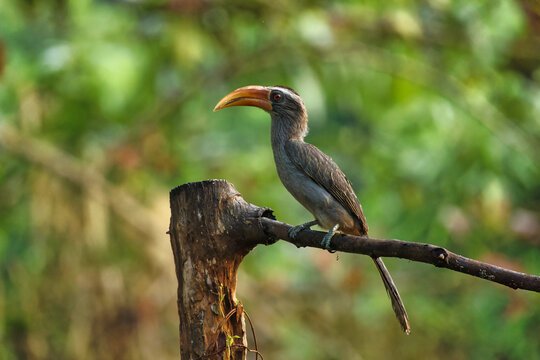
THATTEKAD
Blessed with so many natural wonders, Thattekad is a picturesque destination, masked in the glory of abundant flora and fauna. This wonderful place is positioned on the Njiyapilli Hill and is mainly famous for the Salim Ali Bird Sanctuary, named after the great Ornithologist, Dr. Salim Ali. This sanctuary was established in the year 1983 by the Kerala Government, on recommendation of Dr. Salim Ali in the early 1930s. This is the most popular bird sanctuary of India and houses about 280 rare species of water and land birds. The scenic beauty of Thattekad Bird Sanctuary cannot be described in words, it can only be felt and enjoyed! Visit India’s most beautiful Thattekad Bird Sanctuary and catch a glimpse of some of the most amazing birds and their landscapes that are hard to overlook. Sprawling over 25 km sq and at the distance of around 60 km towards the north-east of Kochi, Thattekkad Bird Sanctuary is located in the Kothamangalam Taluk of Ernakulam district on the northern bank of the Periyar Rive. Since the forest is covered with a huge variety of tropical deciduous and evergreen tree, it offers a safe paradise for birds. Hence, it’s an interesting place to visit for birdies and wildlife enthusiasts.
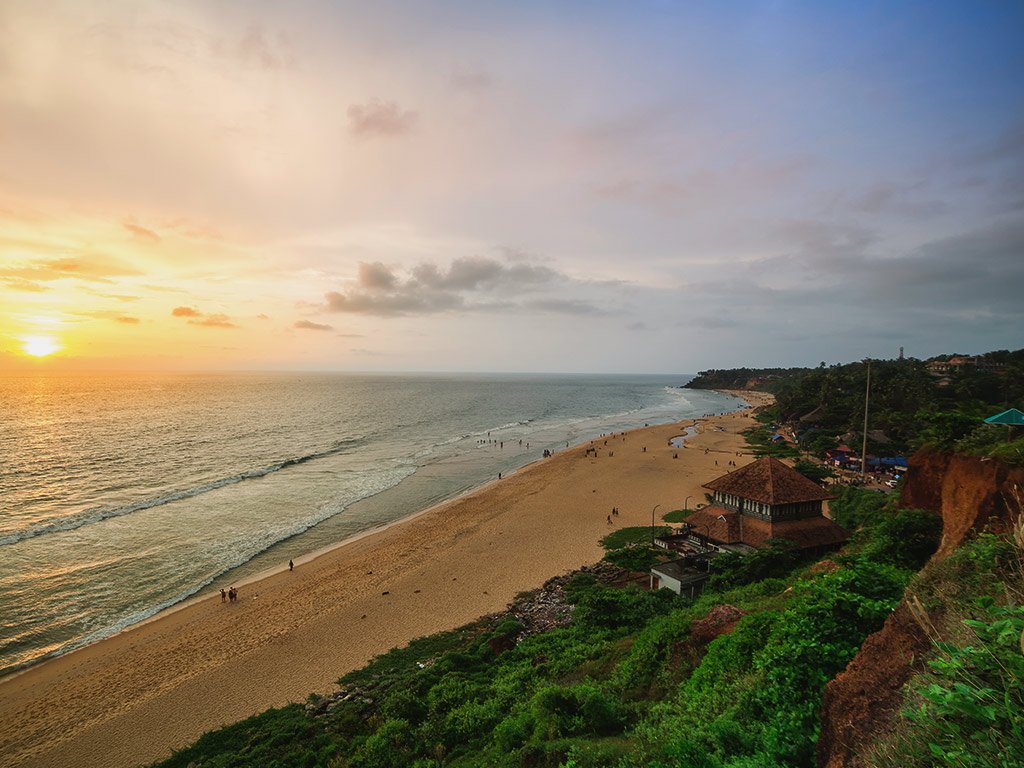
VARKALA
Varkala is a coastal town in the southern part of Kerala known for the unique 15m high ‘Northern Cliff’ adjacent to the Arabian Sea. It is popular for its hippie culture, shacks on the cliff serving great seafood and playing global music and the samadhi of Kerala’s saint Sree Narayana Guru. Varkala is also known for Jardana Swami Temple, also known as Dakshin Kashi. Varkala has some of the best pristine beaches, hills, lakes, forts, lighthouses, natural fisheries and springs – all of this together makes this town a little paradise. You will also find a lot of shops with signboards in Hebrew selling Yoga mats, oxidised silver jewellery and harem pants made of cotton. Ayurvedic spas, affordable resorts, hostels, clean beaches make it a must-visit city of Kerala. Sunsets at the Varkala Beach are especially pristine and call for a serene walk along the beach. Also if you are a seafood lover, then the place is a paradise for you. The eating joints nearby offer some of India’s best moth watering and affordable food.

GAVI
A must visit place for all nature lovers as Gavi is preserved in its natural scenic beauty untainted by the mighty hands of modernity. Gavi is mainly known for its wildlife. The road leading to Gavi is blanketed by tea plantations, which itself is a refreshing experience. En route to Gavi are places of interest like Mundakayyam, Kuttikanam, Peermedu and Vandiperiyar from where the road deviates to Gavi.Once you reach Gavi the serene eco-lodge ‘Green Mansion’ awaits you like a mother to embrace you in its protective fold. From the ‘Green Mansion’, one can savour the spectacular view of the Gavi Lake and the adjoining forests. The place is rich in flora and fauna. There are hills and valleys, tropical forests, sprawling grasslands, sholas, cascading waterfalls and cardamom plantations. Endangered species including the Nilgiri Tahr and Lion-Tailed Macaque are often sighted on the outskirts of Gavi. With more than 260 species of birds including the Great Pied Hornbill, Woodpecker and Kingfishers, Gavi is literally a paradise for birdwatchers.

KODANAD
Kodanad, Kerala, is a beautiful village, located approximately 40kms away from Cochin. The place is easily accessible via air, rail, and road. Kodanad is widely known for its Elephant Training Centre, which can offer fascinating views. People often visit Kodanad View Point for witnessing beautiful sunsets and sunrises. Kodanad holds untouched beauty, attracting even film crews. Located across the banks of Periyar river, various walkways are there alongside the river. Kodanad even offers Elephant safaris, which are safe and comfortable. The place has great weather almost all year round, attracting domestic and international tourists.
Plan Your next trip
Recommended Tour Options For Kerala

Refreshing Kerala

Exotic Kerala

Memorable Kerala
Kerala Dance Forms
Kerala has more than 50 different dance forms that provide enlightenment and entertainment for both its natives and visitors. These dance forms are nothing but art that combines culture, tradition, religion, and creativity. The dancers wear appealing costumes and ornaments that enhance the overall charm of the dance forms.
Apart from incredible landscapes and beautiful water bodies, dance forms are crucial in popularising the state. Also, this is why Kerala stays one of the top destinations in India throughout the year.
1. Kathakali is a classical dance form of Kerala, demanding long years of training. Believed to have evolved from Ramanattam, another classical art form composed by Kottarakkara Thampuran, Kathakali incorporates the techniques of some of the major ritual art forms of Kerala.
The characters of Kathakali do not speak and the story is presented through songs from the background. This makes Kathakali music a very important component of this art form. The text of Kathakali songs is known as Attakkatha. Chenda, Maddalam, Chengila and Elaththalam are the instruments used with Kathakali music.
Like most other classical dance forms of India, Kathakali is also based on Natya Shastra, the ancient treatise on dance, written by Sage Bharata.
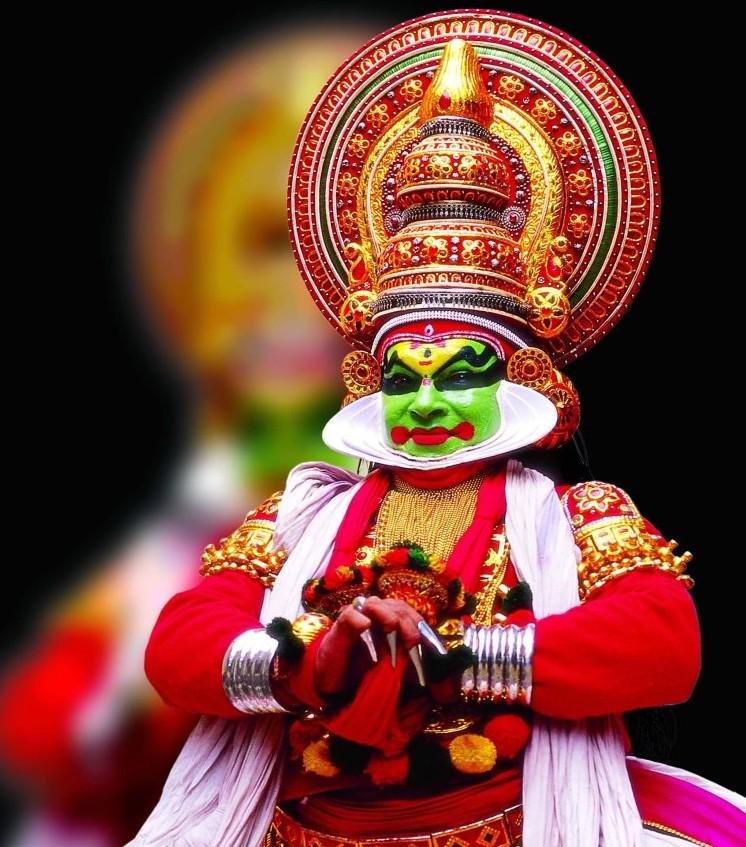

2. Theyyam is the popular ritual art form of Kolathunadu (Kingdom of Cannanore). The Theyyam dance is performed in front of the village shrine, groves, and in the houses as ancestor worship. The theyyam period is from the 10th of Malayalam month Thulam (October/November) and comes to a close by the end of June.
Man assumes the form of God and dances propitiating and appeasing them and in return, the Gods assure prosperity and peace to society and is the belief behind the Theyyam performance. The performers of Theyyam belong to communities like Vannan, Malayan, Mavilan, Velan, Munnoottan, Anjunnoottan, Pulayar, Kopalar and others.
3. The meaning of Mohiniyattam begins with the figure Mohini, the female avatar of Vishnu. Mohini is a supreme enchantress who uses her femininity to gain the advantage of good against evil. Mohini comes from the verb root moha, meaning to perplex or cause delusion. This classical Indian dance tradition has embodied the essence of female beauty and allurement for centuries and continues to be widely performed today.


5. Kalaripayattu is a unique and traditional dance form of Kerala that includes martial arts. Ancient warriors practised this dance form to learn self-defence. Being one of the oldest surviving Indian martial arts, it involves some powerful activities like running, jumping, and somersaults.

Top 10 foods to try in Kerala & Don’t leave Kerala without trying them
1. Puttu and kadala curry
2. Appam with stew
3. Karimeen pollichathu (fish)
4. Malabar Parotta with Kerala beef curry
5. Erissery or pumpkin and lentil curry
6. Kerala prawn curry (chemmeen curry)
7. Thalassery biryani
8. Fish moilee
9. Banana fritters (dessert)
10. Palada payasam (dessert)

ALLEPPEY
Referred to as the Venice of the East, Alappuzha has always enjoyed an important place in the maritime history of Kerala. Today, it is famous for its boat races, backwater holidays, beaches, marine products, and coir industry. Alappuzha Beach is a popular picnic spot. The pier, which extends out to the sea here, is over 137 years old. Entertainment facilities at the Vijaya Beach Park add to the attraction of the beach. There is also an old lighthouse nearby which greatly intrigues all visitors.

ATHIRAPPILLY
Athirappilly is popular among tourists. Athirappilly Falls is one of the best places to visit in Kerala. Another popular waterfall to visit is the Vazhachal Falls. Athirappilly Falls is a part of the Chalakudy river and it is approximately 80 feet in height. Athirappilly is easily reachable from Chalakudy by taking a vehicle for rent or by bus from the Chalakudy private bus terminal.

BEKAL
Bekal in Kerala’s far north, have some long, white-sand beaches begging for DIY exploration. Bekal Beach encompasses a grassy park and a long, beautiful stretch of sand that turns into a circus on weekends and holidays when local families descend here for rambunctious leisure time. Isolated Kappil Beach, 6km north of Bekal, is a beautiful, lonely stretch of fine sand and calm water, but beware of shifting sandbars.

COCHIN
The queen of Arabian Sea is located in South West Cost of India. Located between the Arabian Sea and the Western Ghats, Kochi has been one of the most sought-after destinations in India. Fort Kochi and Mattancherry palace remain wonderfully serene, steeped with sepia-tinted memories of past glory and heritage. With its spice markets, Jewish synagogue, European church, Chinese fishing nets, a Portuguese palace, and 17th-century Dutch homes, Kochi stands testimony to the irresistible pull felt by wanderers and traders for over 600 years.

GURUVAYUR
Guruvayoor is home to the historic Sree Krishna Temple, called the Dwaraka of the South. It is among the most revered and popular pilgrimage destinations in Kerala and the entire country. The central shrine is believed to have been rebuilt in 1638 A.D. The architectural style and individual elements inside the shrine are beautiful representations of the history of the place.

KUMARAKOM
Kumarakom is a village on Vembanad Lake in the backwaters of Kerala, southern India. It’s laced with canals, where houseboats ply the waters. Kumarakom Bird Sanctuary is home to many species including cuckoos and Siberian storks. Nearby, the Bay Island Driftwood Museum displays wooden sculptures. In the lake, Pathiramanal Island is a haven for rare migratory birds. Ancient Thazhathangady Mosque is east of Kumarakom.

KOVALAM
Kovalam is an internationally renowned beach with three adjacent crescent beaches. It has been a favorite haunt of tourists since the 1930s. A massive rocky promontory on the beach has created a beautiful bay of calm waters ideal for sea bathing. The leisure options at this beach are plenty and diverse. Sunbathing, swimming, herbal body toning massages, special cultural programs, and catamaran cruising are some of them. Life on the beach begins late in the day and carries on well into the night. The beach complex includes a string of budget cottages, Ayurvedic health resorts, convention facilities, shopping zones, swimming pools, Yoga and Ayurvedic massage centers.

MUNNAR
Munnar rises as three mountain streams merge – Mudrapuzha, Nallathanni, and Kundala. 1,600 m above sea level, this hill station was once the summer resort of the erstwhile British Government in South India. Sprawling tea plantations, picturesque towns, winding lanes, and holiday facilities make this a popular resort town. Among the exotic flora found in the forests and grasslands here is the Neelakurinji. This flower which bathes the hills in blue once in every twelve years. Munnar also has the highest peak in South India, Anamudi, which towers over 2,695 m. Anamudi is an ideal spot for trekking.

KOLLAM
Kollam (Quilon) is the southern approach to Kerala’s backwaters and one end of the popular backwater ferry trip to Alleppey. One of the oldest ports in the Arabian Sea. The center of town is reasonably hectic, but surrounding it is the calm waterways of Ashtamudi Lake, fringed with coconut palms, cashew plantations and traditional villages – a great place to get a feel for the backwaters without the crowds.

POOVAR
Poovar is a tourist town in the Trivandrum district of Kerala state, South India. This village is almost at the southern tip of Trivandrum while the next village, Pozhiyoor, marks the end of Kerala. This village beach attracts tourists. Major attraction is boating through the back waters.

THEKKADY
The very sound of the word Thekkady conjures up images of elephants, unending chains of hills and spice scented plantations. The Periyar forests of Thekkady is one of the finest wildlife reserves in India. Spreads across the entire district are the picturesque plantations and hill towns that nestle beautiful trails for treks and mountain walks.

WAGAMON
Wagamon hill station in Idukki is among the few spots on the planet that need to be experienced firsthand to truly discover its glory. The grassy hills, velvet lawns and overall mysticism of the place cannot be replicated anywhere else in the world. This quaint town lies untouched by any modern influences and is neatly tucked away in Idukki district. Visitors can avail many activities including trekking, paragliding, mountaineering and rock climbing. People love travelling across a chain of three famous hills: Thangal, Murugan and Kurisumala. These are important to Hindus, Muslims and Christians, respectively, and are a perfect example of the communal harmony prevalent in the place.

WAYANAD
Wayanad is the green paradise – the border world of the greener part of Kerala.Situated not far from Calicut or the city of Zamorins, Wayanad is a world apart from Keralas agricultural and industrial epicentres. It is a quiet place where scenic beauty, wild life and tradition matter, simplicity is a virtue and beauty still blossoms from the mountainous horizon and from the green glaze of alluring vegetation. Clean and pristine, enchanting and hypnotizing, this land has a history and mystery, culture and social epistemology yet to be discovered.
Plan Your next trip
Recommended Tour Options For Kerala

Refreshing Kerala

Exotic Kerala


